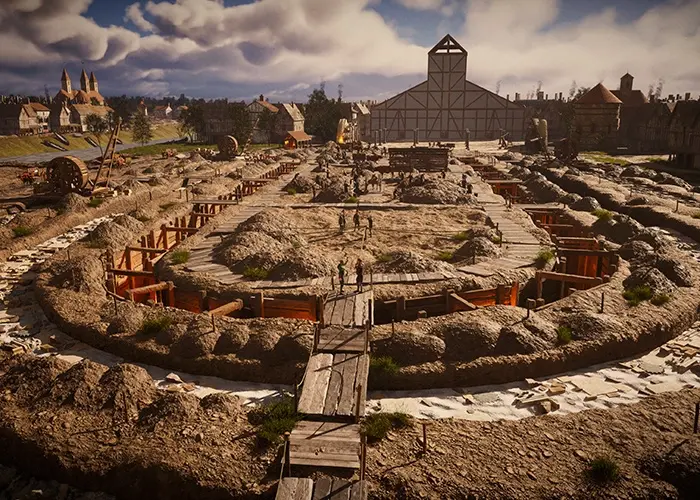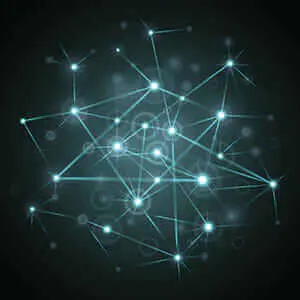& Construction

Integrated BIM tools, including Revit, AutoCAD, and Civil 3D
& Manufacturing

Professional CAD/CAM tools built on Inventor and AutoCAD
In the early evening of April 15, 2019, a thick cloud of smoke filled the Parisian sky. Notre-Dame de Paris, one of the world’s most iconic cathedrals—the same one that was witness to Napoleon’s coronation, as immortalized by the 18th-century painter Jacques-Louis David—was burning. On that catastrophic night, nine centuries of French history went up in flames as Paris’s beloved cathedral was mauled by fire.
The fire was caused by an accident in the cathedral’s attic, transforming the oak and lead spire designed by architect Eugène Viollet-le-Duc in the 19th century into a torch. The heat caused it to bow down and then collapse, along with the rest of the roof.
More than 170 years before the tragedy occurred, Victor Hugo had penned a sort of premonition in his novel The Hunchback of Notre-Dame: “All eyes were raised to the top of the church. They beheld there an extraordinary sight. On the crest of the highest gallery, higher than the central rose window, there was a great flame rising between the two towers with whirlwinds of sparks.”
Hundreds of years later, this terrible scene played out as Parisians watched 500 firefighters battle the blaze for hours. In the end, the towers were saved, but most of the roof was destroyed. The landmark was shuttered as the city vowed to rebuild.
The emotion evoked by the Notre-Dame fire spread far beyond the borders of France, with gestures of solidarity and donations from companies and individuals pouring in from all corners of the planet. In addition to loyal churchgoers, the monument welcomed more than 30,000 visitors per day before the fire. French President Emmanuel Macron made a solemn vow to the public that the cathedral would be rebuilt by the end of 2024.
In response to this tragic event, Notre-Dame de Paris, the Experience intends to revive the cathedral’s 900-year-old history. The experience, a virtual immersion in the history of the cathedral, is by Histovery, a French start-up specializing in delivering immersive and augmented-reality (AR) tours.
To date, the company brought the exhibit to nearly 20 museums and monuments in France and in Germany. Through exclusive sponsorship from The L’Oréal Group, the exhibit opened in the France Pavilion at the World’s Fair in Dubai and was on display at the Collège des Bernardins in Paris April–July 2022; it’s at the National Building Museum in Washington, D.C., April–September 2022. From there, it will travel to Dresden, Germany; New Orleans; and then to a dozen other cities in the next two years.
“Histovery offers a deep dive into the cathedral’s history and restoration,” says Bruno de Sa Moreira, company co-founder and CEO. “We aim to make Notre-Dame de Paris accessible, using augmented reality and interactivity in a way that’s in line with contemporary scientific knowledge.”
In practical terms, visitors begin the virtual tour using an interactive tablet called a HistoPad. With it, they can explore 3D historical reconstructions from all angles, select the level of visual detail, move virtual objects, open doors, and immerse themselves—getting lost in the otherwise inaccessible nooks and crannies of scenes from various time periods. As visitors stroll through the exhibit, they can scan terminals that serve as portals to other eras, allowing them to travel back in time to—and interact with—reenacted historical scenes.
“When visitors are able to play an active role, they can more easily quench their thirst for knowledge,” says Edouard Lussan, co-founder of Histovery and designer of the Notre-Dame de Paris HistoPad. Histovery developed its digital tools based on Autodesk 3ds Max and Maya.
“Such tools make it possible to explain more complex elements, and since more details can be included, the visual product can provide even more information,” Lussan says.
These digital technologies and the expertise of the 12 artists working from its studios make it possible for Histovery to offer a unique view of Notre-Dame de Paris. The exhibit offers unprecedented access to a wealth of architectural details, historical anecdotes, and scientific realities that the general public was previously unaware of. This was achieved by combining virtual reality (VR) with the accuracy of contemporary scientific knowledge and by collaborating with the public institution responsible for Notre-Dame de Paris’s conservation and restoration.
“Coordinating between artistic and scientific teams on the project is crucial because the exhibit’s accuracy relies on the alchemy between them,” de Sa Moreira says.
“Managing the very high number of historical sources and no fewer than seven scientific committees, depending on the period, was a significant challenge that had to be overcome,” Lussan says. “Other major issues included selecting which topics to address and having to move forward at a pace that production and development of the project would allow.”
Re-creating the 21 scenes in the exhibit required more than a full year of work. Preproduction (concepts and research) progressed at the same time and spanned more than six months. “Given its digital dimension, the exhibit can easily be transported without risk of damage or loss,” de Sa Moreira says. “What’s more, it can be cloned, which is how it can be shown simultaneously in both Paris and Washington.”
Histovery has produced HistoPads since 2013 and is continually improving the process for streamlining production and development. “This experience is what has enabled us to be successful on this project,” Lussan says. “The scope of the exhibit is unparalleled, given the number of different time periods that needed to be accessed over the course of a tour, and re-creating all this for the HistoPad on time required exceptional, flawless teamwork.”
With “Notre-Dame de Paris, the Experience,” original reenactments are available to the public for the first time. This is Notre-Dame Cathedral as it has never been seen before. The HistoPad provides the public with quick access to information, offering an intuitive interface that lends itself to cultural mediation by encouraging the visitor to be more inquisitive. The “Augmented Tour” allows visitors to interact with the exhibit at their own pace, as they play their way through a rich graphic universe reminiscent of a video game.
“In ‘Notre-Dame de Paris, the Experience’, we keep up with the latest developments from the construction site, updating content in between exhibits,” de Sa Moreira says.
Comments from visitors leaving the exhibit are enthusiastic: “It’s a very educational and comprehensive tool … wonderfully interactive!” In a special online article, French magazine Connaissance des Arts reported that “in Dubai, with nearly 150,000 visitors in just 30 days, the exhibit has proven its ability to capture the attention of a broad international audience.”
Histovery relied on Autodesk technologies to realize this project. Autodesk is also involved in rebuilding the Notre-Dame de Paris through the support it provided to the public institution responsible for the conservation and restoration of the cathedral. Autodesk’s AEC Collection, along with BIM 360, were used to create a digital model of the cathedral and the immediate vicinity. These technologies have accelerated rebuilding of the edifice—and their effectiveness has already been proven in other cathedrals across France and around the world.
By exploring the phases of restoration in a way that demonstrates their diversity and complexity, “Notre Dame de Paris, the Experience” also sheds light on centuries-old expertise in the artistic trades. The generally unseen and perhaps underappreciated work of stonemasons, stone cutters, master glassmakers, and other conservator-restorers has been placed in the spotlight. This extraordinary exhibit increases the visibility of these trades, turning them into a living heritage that—like the cathedral—can be appreciated by all.
Maxime Thomas is an editor for the French national and specialized press. He has also worked in radio and covers various aspects of industrial life, including digital transformation and its specific consequences for certain professions.
AECO
AECO
Emerging Tech









